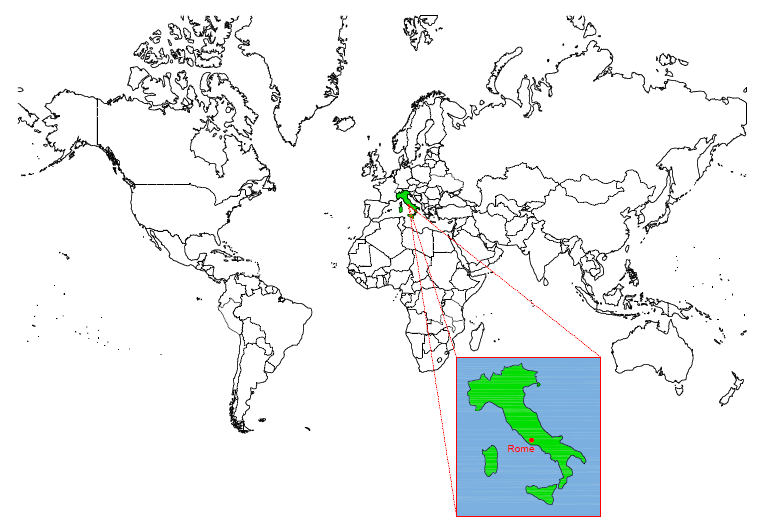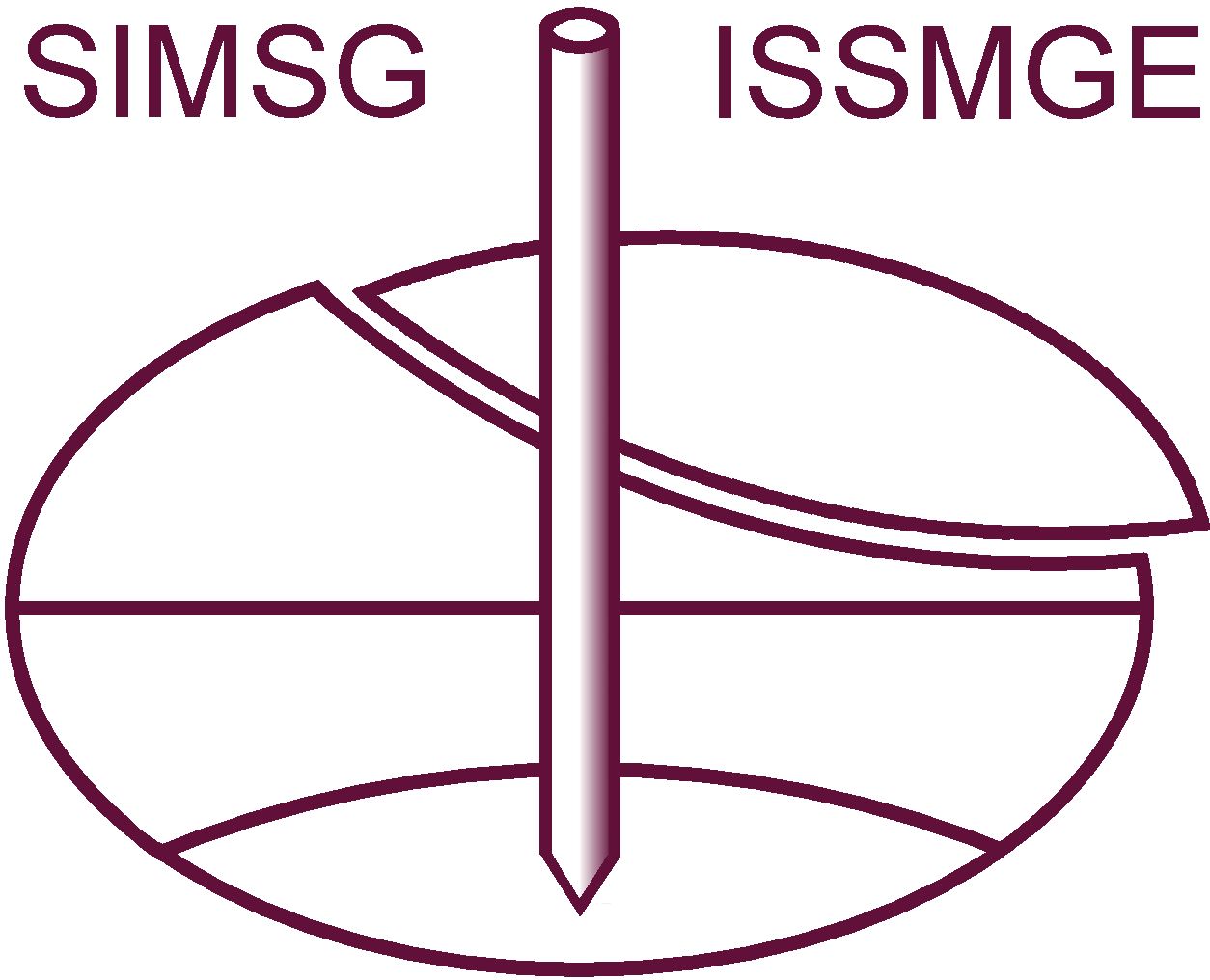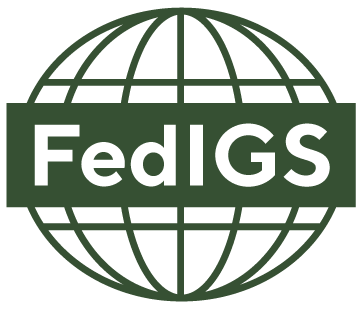General information
THE CLIMATE IN ITALY AND ROMA
The climate varies considerably from the north to the south of Italy.
In the north of the country – the area between the Alps and the Tuscan-Emilian Apennines – the climate is harsh, with very cold winters and very hot, particularly humid summers. In central Italy the climate is milder, with a smaller difference in temperature between summer and winter and a shorter and less intense cold season than in the north; summers are longer, but the sultriness of the northern cities is mitigated by the sea. In southern Italy and the islands winters are never particularly harsh, and spring and autumn temperatures are similar to those reached in the summer in other areas of Italy.
The climate of Roma is generally temperate with mild, rainy winters (September to April) and hot, dry summers (May to September). Rain showers are possible any time of year.
The table below illustrates the monthly average minimum and maximum temperatures for Roma, centre climate area.

| Month | Min. Temperature | Max Temperature | Rainfall |
| January | 37.4 °F | 53.6 °F | 4.0 in |
| February | 39.2 °F | 55.4 °F | 3.8 in |
| March | 41 °F | 59 °F | 2.6 in |
| April | 46.4 °F | 64.4 °F | 2.5 in |
| May | 46.4 °F | 73.4 °F | 1.8 in |
| June | 59 °F | 80.6 °F | 1.3 in |
| July | 62.6 °F | 86 °F | 0.9 in |
| August | 59 °F | 86 °F | 1.2 in |
| September | 59 °F | 80.6 °F | 2.6 in |
| October | 51.8 °F | 71.6 °F | 3.7 in |
| November | 44.6 °F | 60.8 °F | 5.1 in |
| December | 39.2 °F | 55.4 °F | 4.3 in |
SAFETY
Italy is a safe country.
However, should you find yourself in a difficult situation, it is best to turn to the police forces in charge of safety for Italian and foreign nationals residing in or visiting the country.
An efficient, modern, integrated network, with the switchboards of the various police forces, emergency services, organisations and agencies is ready to respond to emergency calls from anywhere in Italy. Access to this network is simple and quick: all you have to do is call the national emergency numbers, which are well known and easy to remember.
Emergency numbers
Police (Carabineri) : 112
General Emergency (Soccorso pubblico di emergenza) : 113
Fire brigade (Vigili del fuoco) : 115
Forest Fire (Incendio boschivo) : 1515
Car Breakdown Assistance (Socorso Stradali) : 116
Ambulance/Medical Emergencies (Emergenza sanitaria) : 118
Pan-European Emergencies : 112
Useful links:
State Police : www.poliziadistato.it
Ministry of Interior : www.interno.it
Ministry of foreign affairs: www.esteri.it/mae/en/
Carabinieri : www.carabinieri.it
Ministry of Defence : www.difesa.it
TOURIST CARDS
Travel and explore the monumental cultural heritage of the cities and Regions of Italy with Tourist Cards!
Take advantage of museum and cultural offers, deals on public transport, and other discounts.
Roma pass: http://www.romapass.it/en/the-cards/
MORE INFORMATION
Currency used in Italy
Since 2001, the currency used in Italy is the euro. One euro is divided up into 100 cents. There are eight different coins (1, 2, 5, 10, 20 and 50 cents) and seven notes (5, 10, 20, 50, 100, 200 and 500 euros). Those arriving in Italy with foreign currency can obtain Euros through any bank, ATM or bureaux de change.
Language
Italian. English is understood.
Credit cards
As well as in cash, purchases can be paid for using the most common credit cards. This payment system is common in Italian shops, which generally display the symbols of the credit cards they accept on the outside door. If you pay by credit card you will be asked to show an identity document. Travellers cheques (in USD or Euros) can also be cashed in Italian banks.
Tips
Tips are not compulsory and in Italy there are no generally established rules, although it is common practice to leave a sum amounting to around 10% of the bill if you are satisfied with the service you have received.
Making calls to, from and within Italy
To call an Italian telephone number from outside Italy, either from a landline or a mobile phone, you will need to add the international dialling code for Italy, which is 0039 (+39), followed by the telephone number you require.
To call another country from Italy, you will need to add the international dialling code for the country you are calling, followed by the telephone number you require.
To make calls within Italy, dial the number you require without adding the international country dialling code.
To make calls from public telephones (which you can find on the street, in some bars, restaurants, etc and in shopping centres), you may use coins or phone cards, which can be purchased from tobacconists, news kiosks and telephone shops. Mobile phone reception in Italy is based on GSM technology, which is not compatible with that of a number of countries (including the USA and Japan), unless you have a three-band mobile phone.
Before travelling to Italy you should contact your telephone services provider to activate the international roaming service (if it is not already activated automatically).
Making international calls from a mobile phone may be very expensive, and it is often advisable to purchase a phone card to call home from a public telephone.
Internet and e-mail usage
There are numerous internet points and cafés offering internet access. In many hotels (especially higher-category ones) a direct internet connection is provided in the rooms. In addition, in Italy you will find Wi-Fi access available in many airports, hotels, train stations and other public places where travellers pass through or stop off.
Local Time in Italy
Local time is GMT +1, Central European Time (CET) Zone, 1 hour ahead of Greenwich Mean Time (GMT), and observes Daylight Saving Time: at the beginning of spring the clocks go forward an hour in order to take advantage of an extra hour of sunlight in the late afternoon/evening. At the beginning of autumn the clocks are shifted back an order to standard Central European Time.
Typical mealtimes in Italy
Italians usually have breakfast from 7.00 a.m. onwards. Hotels generally set a time (around 10.00 a.m.) after which breakfast may no longer be ordered. In restaurants, lunch is served from 12.30 to 2.30 p.m, and dinner between 19.30 and 23.00. These times are merely indicative, and may vary significantly, depending on the area of the country you are visiting: in the north they tend to be earlier, becoming later the further south you travel.
Shop opening hours
Shops are generally open from Monday to Saturday, from 9.30 a.m. to 12.30 and from 3.30 p.m. to 7.30 p.m., although shopping centres and department stores often stay open all day, from 10.00 a.m. to 9.00 or 10.00 p.m. Shopping centres and stores are also open on several Sundays throughout the year.
Pharmacies have the same opening hours as shops, from 9.30 a.m. to 12.30 and from 3.30 p.m. to 7.30 p.m.; in the larger cities, some pharmacies are open 24 hours. For emergencies during the night, or when the pharmacies are normally closed, a number of them remain open, on a rotational basis. A calendar listing the nearest one open can be found on the doors of all local pharmacies.
Electrical system in Italy
In Italy the electrical current is 220 volts AC (50 Hz). Electrical sockets comply with European regulations. In most hotels you will find adaptors for different types of plugs. A variety of plugs are in use including the European-style two-pin plug.
Tapwater drinkable in Italy
The supply of drinking water is guaranteed throughout Italy. The water from taps and fountains is checked regularly, and is perfectly safe to drink, unless there is a notice indicating otherwise.
Metric system used in Italy
In Italy, the basic unit of measurement is the metre. The International System of Units (SI), the standard metric system in use in the European Union, defines the seven fundamental units used (metre, kilogramme, second, ampere, kelvin, mole, candela).
-
- +39 06 4465569
- +39 06 44361035
- [email protected]
- [email protected]
- Viale dell’Università 11, 00185 Roma
Follow us





